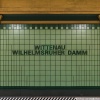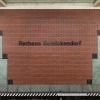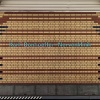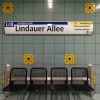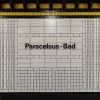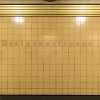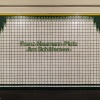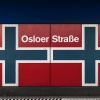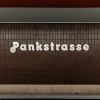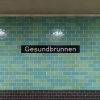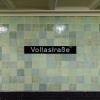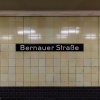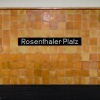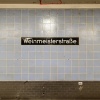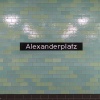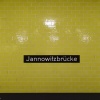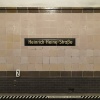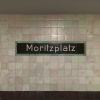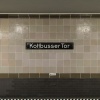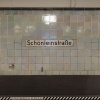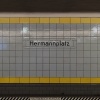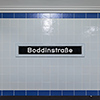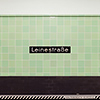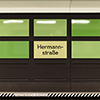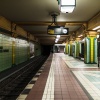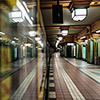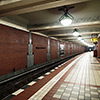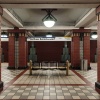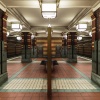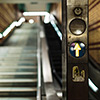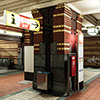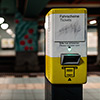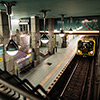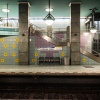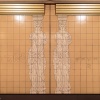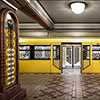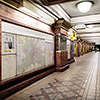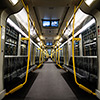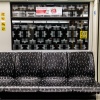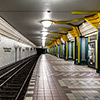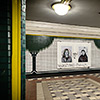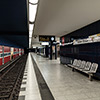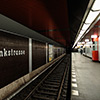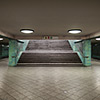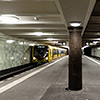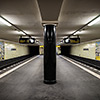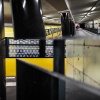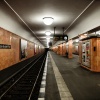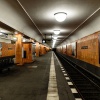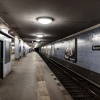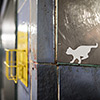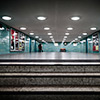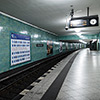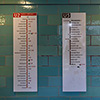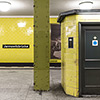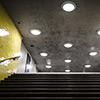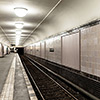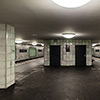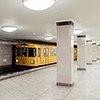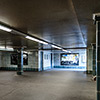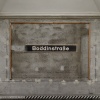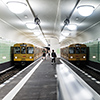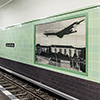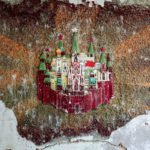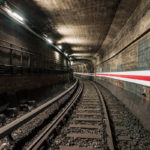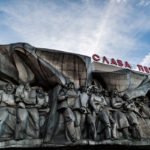The Poor, the Cool and History – Riding on Berlin’s U8
Besides being Berlin’s second North-South connection the U8 line is first and foremost a journey through history as well as social structures of the German capital. Beginning at the mystic Märkisches Viertel, having its own rules, the U8 route leads through nowadays central Berlin being annexed by trend victims, parasitic hipster Yankees and new arrived wanna-be Berliners around Rosenthaler Platz, to end at the original Kreuzberg and Neukölln districts, where life in summer happens in the streets, the Mediterranean way, where Berlin’s multi-cultural facet becomes more apparent again.
With an initial start of construction works in 1912 and having started to provide transportation services in 1927, the U8 is very old. Back then reaching from Boddinstraße station to Schönleinstraße it got extended already one year later towards Heinrich-Heine-Straße and later in 1930 towards Gesundbrunnen, while at the other side the tunnel got driven more and more southwards trying to connect to the Ringbahn.
This attempt to connect U8 and Ringbahn at Hermannstraße station was started in 1929 but had to be stopped in 1931 due to the aftermath of the world economic crisis. Maybe that was fate as for many Berliners the unfinished tunnel meant a chance to stay alive during World War II since there they could seek shelter from the bombings. Because of the war and the subsequent East-West separation the completion of the connection between U8 and Ringbahn was a long time in the coming, until 1996. After WW2 and due to having had minor damages only the U8 could quickly provide transportation services again as one of the first of Berlin’s undergrounds.
But then the East-West story started and turned the U8 into a transit route since it also ran through former East Berlin territory. Stations over there got entirely closed, at Alexanderplatz station the U8 entrance even got bricked up out of recognition. Being guarded by border soldiers and transport police, the U8 coaches having West Berliners inside rolled along ghost stations under the Eastern bloc; a worldwide unique fate that also the U6 had to share. Also see http://www.berliner-untergrundbahn.de/ou-01.htm (in German only).
Along with the completion of the Märkisches Viertel estate in the 1960s, politics promised a connection to infrastructure as well, but since West Berlin entirely boycotted the S-Bahn the U8 got considered to do that job. Consequently its line became extended northwards throughout the years with subsections to Osloer Straße (1977), to Paracelsus-Bad (1987) and the northern terminus Wittenau (1994) to finally start the promised operation. On exactly that section, from Osloer Straße to Wittenau social differences grow apparent as for example when entering Franz-Neumann-Platz station smell-wise you always feel as if just having entered an overflowing portable toilet booth.
Riding with the U8 you only have to let off your eyes from your smartphone to see the volatile history of this underground as its stations provide enough details. While the newer stops to the north of Osloer Straße have a more or less modern design, the older stations along the route through central Berlin remained kind of untouched during the East West conflict. Surely the one or another technocrat would have exchanged for example the original old stations signs, displaying the station name with white letters against a black background, to increase readability, but the GDR’s interdiction preserved everything and kept the classic look and feel.
Even today you can see the old U8 station signs between Bernauer Straße and Alexanderplatz, at stops like Rosenthaler Platz as well as Weinmeisterstraße, the nowadays epicentre of new Berlin-Mitte, where an army of cool and hip new arrivals sits in cafes staring on MacBook screens for hours plus confusing that with with real labour and where a boozing Matthias Schweighöfer hails from the walls toastingly, proclaiming that for him Krombacher Hell is the beer of beers. Having arrived this neighbourhood, a stronghold of boutiques and high-priced scene hairstylists, he seems to tell us: “Welcome to the new, anglicised and arrogance driven Berlin of greedy investors, Yankee bigmouths and trend victims.”
Because of its audience Berlin’s U1 line leading through Kreuzberg once was shrouded in legend. That is still the case, a little, but the area where U1 starts, Schlesisches Tor, pretty much changed as today it’s no longer a neighbourhood of punks, dropouts and creative folks anymore. Also in that case Berlin’s underground reflects an urban development that moved away from U1 to U8, in particular the track section between Gesundbrunnen and Hermannstraße shows that. Today the line shrouded in legend is the U8.
Since September 2014 the southern track section leading from Boddinstraße, Leinestraße to Hermannstraße was closed due to construction works but now all things shine in new splendour. I was especially waiting for that to present you the eight of Berlin’s U lines in its full entireness. To me the 24 stations and 18,1 kilometres long course of the U8 provides the most complex reflection of Berlin, its society, the clash of social classes. It tells you a story of history and modern influences, a story of ever ongoing development.
